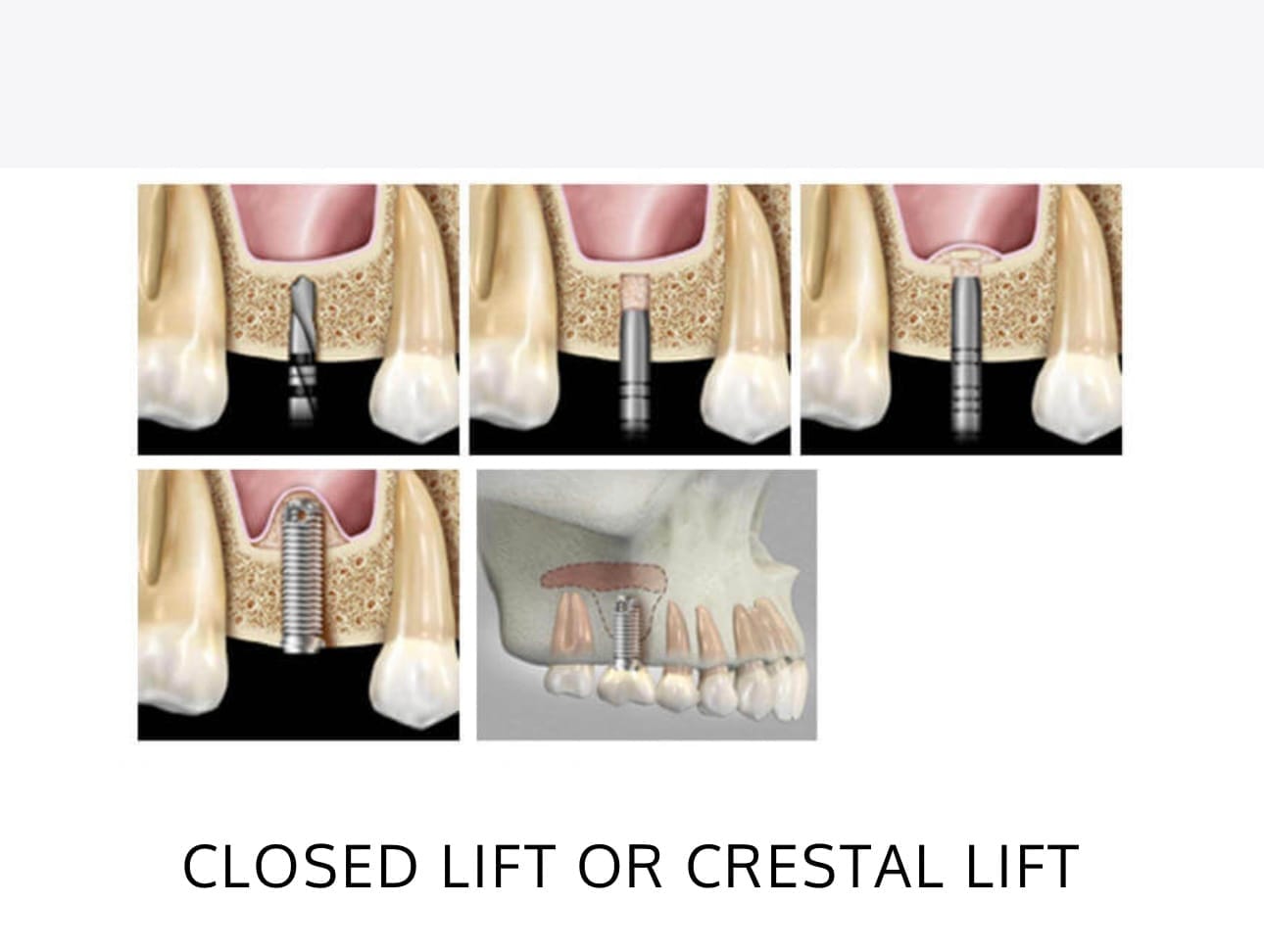
Sinus Lift in North Hollywood
Sinus lifts, also known as sinus augmentation, are specialized dental procedures designed to increase the amount of bone in the upper jaw to support dental implants. At Nuevo Dental, we offer comprehensive sinus lift services to ensure the success of your dental implant treatment. Here’s a detailed overview of sinus lifts and what you can expect:
Understanding Dental Sinus Lifts:
– A sinus lift is typically recommended when there is insufficient bone height in the upper jaw, particularly in the premolar and molar areas, due to factors like tooth loss, bone resorption, or anatomical limitations.
– During a sinus lift procedure, the sinus membrane is gently lifted, and bone graft material is placed in the space created between the jawbone and the sinus cavity. This helps promote new bone growth and creates a stable foundation for dental implants.
Indications for Sinus Lifts:
– Sinus lifts are often necessary for patients who require dental implants in the upper back teeth but have inadequate bone volume. Common indications include:
- Severe bone loss due to long-term tooth loss or periodontal disease.
- Anatomical factors such as a naturally thin sinus floor or proximity to the sinus cavity.
- Previous trauma or surgical procedures that have affected the bone structure.
Types of Sinus Lift Procedures:
– There are different approaches to sinus lifts based on the amount of bone needed and the patient’s specific condition:
- Crestal Approach (Direct Sinus Lift): Involves accessing the sinus through the implant site without creating a separate incision, suitable for minor bone augmentation.
- Lateral Window Approach: Involves creating a small window in the lateral wall of the sinus to access and augment the bone, ideal for more extensive bone grafting.
Bone Grafting Materials:
– Various bone grafting materials may be used during sinus lifts, including:
– Autogenous Bone Grafts: Harvested from the patient’s own body, such as the chin or hip, for optimal compatibility and integration.
– Allografts: Donor bone tissue processed for safety and sterility, often used in combination with other grafting materials.
– Xenografts: Derived from animal sources, such as bovine or porcine bone, with excellent biocompatibility.
– Synthetic Bone Substitutes: Biocompatible materials designed to mimic natural bone structure and promote new bone formation.
Recovery and Post-Operative Care:
– After a sinus lift procedure, patients may experience mild swelling, discomfort, or sinus congestion, which typically resolves within a few days.
– It’s essential to follow post-operative instructions, including taking prescribed medications, avoiding strenuous activities, and attending follow-up appointments for monitoring and healing assessment.
Benefits of Sinus Lifts:
– Provides adequate bone support for successful dental implant placement in the upper jaw.
– Improves the long-term stability and functionality of dental implants.
– Enhances facial aesthetics by restoring lost bone volume and supporting natural facial contours.
Sinus Lift Dentist – Specialized Care for a Stronger Smile
When it comes to preparing for dental implants, choosing a sinus lift dentist with expertise is crucial for a successful procedure. A sinus lift is a delicate process that requires precision to safely elevate the sinus membrane and add bone graft material, ensuring a stable foundation for implants. At Nuevo Dental, our experienced team specializes in advanced sinus lift techniques, using the latest technology to minimize discomfort and maximize bone regeneration. Whether you have experienced bone loss or need additional support for implants, our skilled dentists are here to provide safe, effective, and personalized care.
